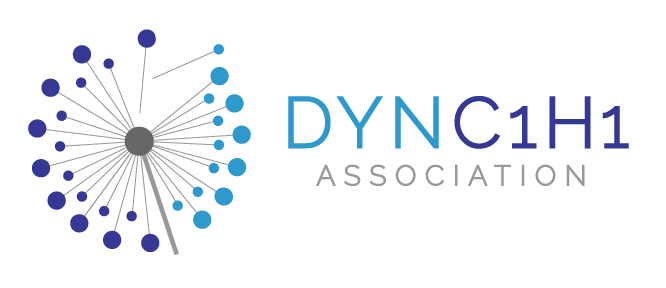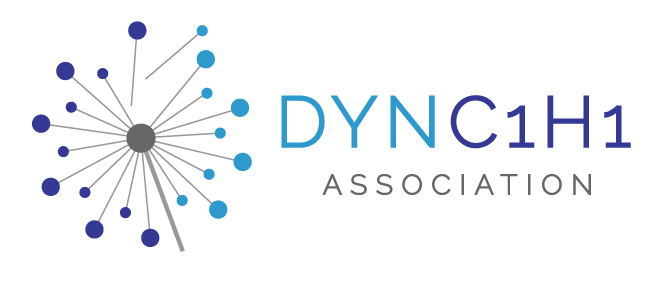Interview with a Genetic Counselor
Get to know our Scientific Advisory Board!
Rozalia Valentine is a licensed genetic counselor and currently serves on the DYNC1H1 Scientific Advisory Board. She answered some common questions about genetic counseling for our community below.
Hi everyone—I’m Rozalia Valentine, a licensed genetic counselor based at Boston Children’s Hospital in Neurogenetics. I specialize in brain malformations, chromatinopathies, and infantile epilepsy. I’ve had the privilege of working with many families affected by rare neurodevelopmental conditions, including those involving the DYNC1H1 gene.
How did I become interested in genetic counseling?
I started out studying psychology at UC Berkeley, where I focused on research related to ADHD and child development. That research showed me how much families struggle to find the “why” behind developmental differences. Over time, I became fascinated by the intersection of genes, brain development, and behavior. I also worked in special education and supported children with complex medical needs and different genetic diagnoses. That experience made it clear to me that families needed more support in understanding diagnoses—and that’s what led me to genetic counseling.
Why did I join the DYNC1H1 Association’s Scientific Advisory Board?
I was honored to join the DYNC1H1 Association’s Scientific Advisory Board because I believe families should have access to accurate, clear, and compassionate information. Rare conditions like those associated with DYNC1H1 often come with uncertainty—but families deserve support, not silence. I joined because families deserve answers. I wanted to be part of a group that’s not only advancing scientific knowledge but also making sure families feel heard and supported. It’s an honor to contribute to such an important mission.
What questions should families ask after a DYNC1H1 diagnosis?
As a genetic counselor, I meet families during some of the most vulnerable moments of their lives. When a child is newly diagnosed with a neurological condition, there are so many questions—Why? What does this mean for our future? Who can we talk to? Start by asking: • What do we know about this particular genetic variant? • What type of genetic variant is this? You can ask for an explanation of what this means. • Are there symptoms we should monitor for over time? • How might this genetic change affect learning, movement, or development? • Are there specialists we should involve early on? • Are there supports—medical, therapeutic, or educational—that we should start now? • How do we make sure our child’s care team—including therapists, teachers, and specialists—has the right information? • Can we participate in research or connect with other families?
Why do symptoms vary, even with the same DYNC1H1 variant?
This is a very common—and important—question. The short answer is that genetics isn’t always predictable. Genes like DYNC1H1 affect many different processes during development, and the same variant can cause a range of symptoms depending on other genetic, environmental, or developmental factors.A variant might affect different brain regions during development, or other genes might modify how the DYNC1H1 variant acts. Sometimes even identical variants can result in very different outcomes. We’re still learning about these “modifiers.” This is why research, data sharing, and patient advocacy matter.
Why is having your genetic report important?
Genetic reports include vital information about the exact spelling change or deletion/duplication in the gene, classification of whether or not it is considered to be pathogenic (causing the disorder) in the year of the testing. Depending on the lab, there may be interpretation of why they classified the genetic change the way they did, and a description of clinical features associated with DYNC1H1. This can guide treatment planning, early interventions, and help your team understand long-term considerations. It also makes seeking second opinions, re-analysis or participation in studies much easier.
The report should also include the “transcript” the gene was classified with – essentially, the version of the gene that was used as the reference at the time your child’s variant was classified. Genes can have multiple transcripts, or “recipes,” depending on how the gene is spliced during processing. Some transcripts are longer, others shorter, and they may include or skip different exons (the building blocks of genes). Different transcripts can lead to slightly different versions of the same protein, depending on the tissue or developmental stage.
In your child’s report, the transcript ID (usually starting with NM_ or ENST_) tells scientists exactly which version of the gene was used to describe the variant. This is important because the numbering of the variant (like whether it’s in exon 4 or 5, or the exact protein change like p.Arg251Cys) depends on the transcript used.
If the preferred transcript changes over time—for example, if researchers later agree a different transcript better reflects how the gene functions in the brain—then a previously reported variant might be re-numbered or interpreted differently.
One thing I wish every family knew:
You don’t have to be a geneticist to understand your child’s condition. Genetic counselors are here to help translate and personalize the science—and make sure you feel informed and empowered. It’s important to provide the tools and space to understand what the diagnosis means for your family and how to plan for the future. You deserve a care team that walks with you every step of the way.
Want to learn more? Check out the recording of a past event Rozalie did with our commhnity: https://www.dync1h1.org/past-events


